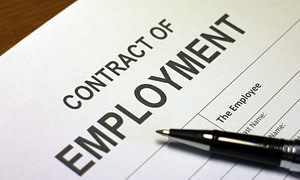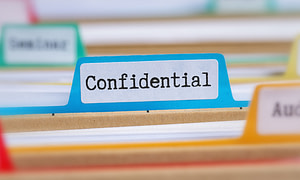Ensuring equal opportunities
Reducing bias in the hiring process is essential to promote fairness, diversity, and inclusivity. In today's competitive and globalised job market, fostering an unbiased recruitment approach not only enhances the organisation's reputation but also leads to better decision-making and improved organisational performance.
A diverse workforce brings varied perspectives, drives innovation, and reflects the demographic reality of the broader society. However, achieving such diversity requires deliberate and structured efforts to mitigate both conscious and unconscious biases that can influence hiring decisions.
Here are several strategies that organisations can implement to minimise bias and create a more equitable hiring process:
Structured interviews
One effective strategy to reduce bias in the hiring process is to conduct structured interviews. This approach involves using a standardised set of questions for all candidates, ensuring consistency and fairness throughout the interview process. By asking each candidate the same questions, interviewers can more objectively compare responses. Additionally, developing clear criteria and rating scales for evaluating these responses can help minimise subjective judgments. This method allows interviewers to focus on the content of the answers rather than being influenced by personal biases or preconceived notions.
Blind recruitment
Another important strategy is blind recruitment, which involves anonymising applications to remove identifying information such as names, gender, age, and educational institutions. This can help prevent unconscious bias from affecting the initial screening process. Implementing blind reviews, where initial assessments of applications are conducted without knowing the applicant's identity, further supports this goal. By focusing solely on the candidate's skills and experience, employers can ensure a more objective evaluation.
Diverse hiring panels
Assembling diverse hiring panels is another key tactic. By including a mix of individuals from different backgrounds and perspectives, organisations can balance out individual biases and bring a broader range of viewpoints to the evaluation process. Providing bias training to all panel members is essential, as it helps them recognise and mitigate their own biases, leading to more equitable hiring decisions.
Use of technology
Leveraging technology, such as AI and software tools, can also play a significant role in reducing bias. These tools can screen resumes and rank candidates based on their skills and experience, minimising human bias. However, it is crucial to regularly audit and adjust these algorithms to ensure they do not perpetuate existing biases. By continuously monitoring and refining these technologies, organisations can maintain an objective and fair hiring process.
Job descriptions & ads
Crafting inclusive job descriptions and advertisements is another important strategy. Using gender-neutral language and avoiding terms that may deter certain groups from applying can help attract a more diverse pool of candidates. Emphasising essential skills and competencies rather than specific degrees or work histories that may not be necessary ensures that the focus remains on what truly matters for the role.
Focus on skills & competencies
Focusing on skills and competencies rather than background details is another effective method to reduce bias. Implementing work sample tests and job-related tasks or simulations allows employers to objectively assess candidates' abilities. Additionally, using assessments and case studies to measure relevant competencies provides a more accurate picture of a candidate's potential performance.
Continuous education & training
Ongoing education and training are crucial for mitigating bias in the hiring process. Regular unconscious bias training sessions for all employees involved in hiring can increase awareness and understanding of unconscious biases. Additionally, training on cultural competency helps staff better appreciate diverse backgrounds, further supporting an inclusive hiring process.
Implement a clear process
Establishing a clear, step-by-step hiring process is essential for reducing bias. Clearly defining each stage of the process and adhering strictly to these guidelines ensures consistency and fairness. Maintaining transparency with candidates about the process and the criteria used for decision-making also helps build trust and reduce perceptions of bias.
Accountability & metrics
Tracking metrics and maintaining accountability are vital components of a fair hiring process. Monitoring hiring data to identify patterns of bias, such as demographic disparities in who is hired or advanced, allows organisations to address issues proactively. Creating feedback mechanisms for candidates and employees provides valuable insights and helps identify potential areas for improvement.
Post-hiring reviews
Regularly reviewing hiring decisions is another important strategy. Evaluating whether hiring outcomes align with diversity and inclusion goals ensures that the process remains fair and effective. Soliciting feedback from new hires about their experience can help identify any biases or issues in the process, enabling continuous improvement.
Implementing these strategies requires commitment and ongoing effort from the entire organisation. By addressing bias at multiple levels of the hiring process, organisations can create a more equitable and inclusive environment that attracts a diverse range of talent. Additionally, an unbiased hiring process not only ensures legal compliance and reduces the risk of discrimination claims but also enhances employee morale and retention.
As the workforce continues to evolve, companies that prioritise fair hiring practices will be better positioned to adapt, innovate, and maintain a competitive edge. Continuous evaluation and adaptation of these practices are crucial, as new challenges and opportunities for improvement will inevitably arise. Ultimately, fostering a culture of inclusivity and fairness benefits everyone—employees, employers, and society as a whole. You can visit the website of the Australian Human Rights Commission for more information on reducing bias in the hiring process.


Want to recruit top talent?
Now that you better understand how to reduce bias in the hiring process, you may be interested in learning more about 11 Recruitment's permanent recruitment services.
11 Recruitment is the leading perm and temp recruitment agency for white-collar staff. We source high achievers for jobs in Perth and throughout Australia.
At 11, we typically get involved in the recruitment process when a client is either seeking a high achiever to elevate their business, recruiting for a role that is hard to fill, or having difficulty sourcing or attracting suitable candidates.
We provide the following recruitment services.
Click the button below to learn more about how 11 Recruitment sources top talent for businesses throughout Australia.




















